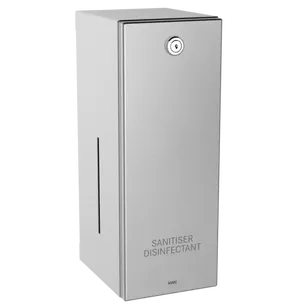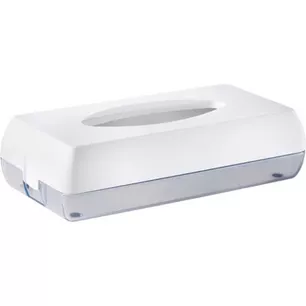Global Handwashing Day 2018


October 15, 2018, marks the tenth anniversary of Global Handwashing Day. Exactly 10 years before this date, the holiday was established by the UN to raise awareness about the importance of handwashing. The year 2008 was designated by the UN as the International Year of Sanitation, and the World Health Organization (WHO) and many other organizations, both large and small, join in promoting handwashing annually.
Why was Global Handwashing Day established?
Unfortunately, such an obvious activity as handwashing is not at all obvious to everyone. In some places around the world, frequent handwashing is not easy due to poor sanitary conditions. In previous years, not washing hands contributed to the deaths of 3.5 million children annually (data from 2012) who did not even reach the age of five. The main causes of death were diarrhea and respiratory infections. Fortunately, this number decreased to 2 million children per year over the four-year period (2012 - 2016), although these statistics are still very sad.
Global Handwashing Day was established to raise awareness among the public, particularly in third world countries, about the harmful effects of not washing hands. Additionally, it aims to better monitor and study handwashing statistics worldwide and to determine what can be done to improve these statistics.
Actions taken to improve handwashing statistics
Many actions are taken to educate children and adults on how to properly wash their hands and understand the importance of handwashing for health and life. Campaigns are organized in schools to help children and their parents acquire and understand this knowledge so they can pass it on to others. In poorer countries, UNICEF helps build water sources and sanitation facilities.
During the first Global Handwashing Day, over 200 million children from around the world participated. Since then, more than 70 countries participating in the celebration organize national-level campaigns, cooperating with government and charitable organizations. Large global companies from the sanitation and hygiene sector also join the initiatives.
Handwashing after using a public toilet
Research conducted by the company KATRIN shows that between 2015 and 2017, the number of people in Poland who wash their hands after using a public toilet decreased by 5%. However, it is not all bad, as the statistics below also show that this is the best result among the surveyed countries.

Handwashing after using a public toilet is extremely important for our health and life. Many infectious diseases are transmitted through simple handshakes or touching objects that someone else previously handled, such as door handles, railings, touch screens, buttons. Additionally, 80% of all infections spread through hand contact, which is why it is so important to wash hands frequently.
When should you wash your hands?
Throughout the day, our hands touch countless objects that have been touched by countless people before us. In public spaces, we come into contact with places that do not look dirty but are. Bacteria, fungi, and viruses are not visible to the naked eye, which is why we should wash our hands even when they seem clean. Hands should always be washed:
- before eating
- before preparing a meal
- after using the toilet (both at home and in public places)
- after returning home
- after blowing your nose or sneezing (as we often sneeze into our hands)
- after playing with animals
- after taking out the trash
- when hands are visibly dirty

The simplest handwashing method
According to the WHO, all that is needed to wash hands effectively is water, soap, and a paper towel. The water should ideally be warm, but it does not have to be hot. Liquid soap is more hygienic than bar soap, and according to recent studies, paper towels are considered a more hygienic solution than hand dryers.
To properly wash your hands, you should start by rinsing them under water, then apply soap and spread it thoroughly over the entire surface of your hands. Remember to clean between the fingers, the wrists, and the backs of the hands. Once the soap is spread, rinse your hands thoroughly under warm water. After washing your hands, dry them thoroughly with a paper towel or another method. Only a paper towel guarantees the mechanical removal of residual germs.
All rights reserved. No part of the publication (text, graphics, images, photos, files, and other data) presented in the OLE.PL online store may be reproduced or distributed in any form or by any means without prior permission. All trademarks, graphic signs, proprietary names, and other data are protected by copyright and belong to their owners.
















































































 Polski
Polski
 Czech
Czech
 German
German
 Spanish
Spanish
 Slovak
Slovak